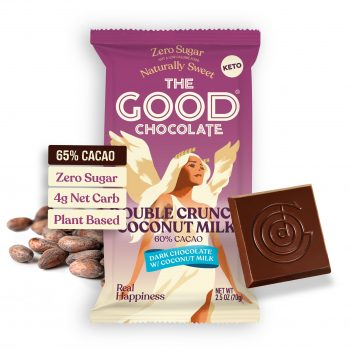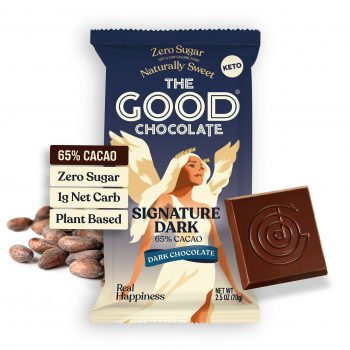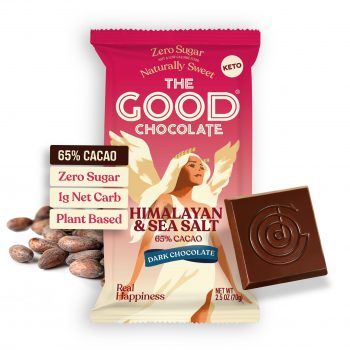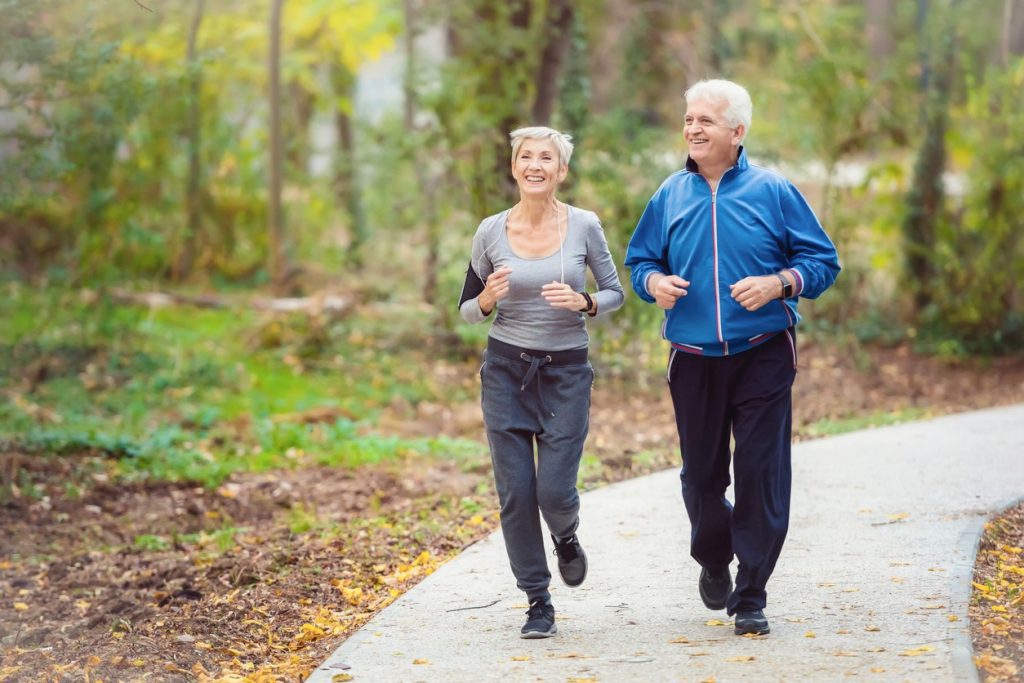
Timur Crone is an extraordinarily gifted athlete, coach & healer who is the founder of the revolutionary InTensional Movement running method which helps prevent and heal injuries so you can enjoy a lifetime of sustained joyful movement.
Today’s blog involves 3 sections:
5 Common Running Injuries Explained (with Exercises)
3 Simple Solutions for Forearm, Chest or Low Back Pain
Deep Breathing for More Calm and Less Pain (plus another Forearm tip!)
Part 1 – Why Does Running Hurt Me? 5 Common Running Injuries Explained.
Running is infamous for its injury rates. Huge percentages of casual runners report experiencing injuries within the previous six months alone. Many former runners talk of how they used to run and now their ‘bad knee’ means they’ll never run again.
What’s up with that? How can a species like us, who have literally evolved for running, be so terrible at it?
It’s not you. It’s our lifestyle. Well, mostly. It’s also us – the arrogance of poor training habits and assumption that running isn’t a sport that requires any background knowledge or training to safely do … quite literally, is hurting us.
But let’s say all that’s a given. What now?
What can you do once you are in pain?
The first thing to know is that the pain is a symptom, caused by other issues (usually). It’s telling you that something (what hurts) is working way too hard, which begs the question of what isn’t working enough. That’s why all the major running injuries are classified as overuse injuries. Something gets overused to the point of breaking (hopefully not literally).
To handle an injury, you need to address the symptom and the cause. So here’s the quick and dirty on common injuries:
Common Running Injury #1: Front of Knee Pain (Patellofemoral Pain or PFP)
The front of your knee hurts when you run and maybe after too. This often happens because of the alignment between your thigh and calf (See Diagram below).
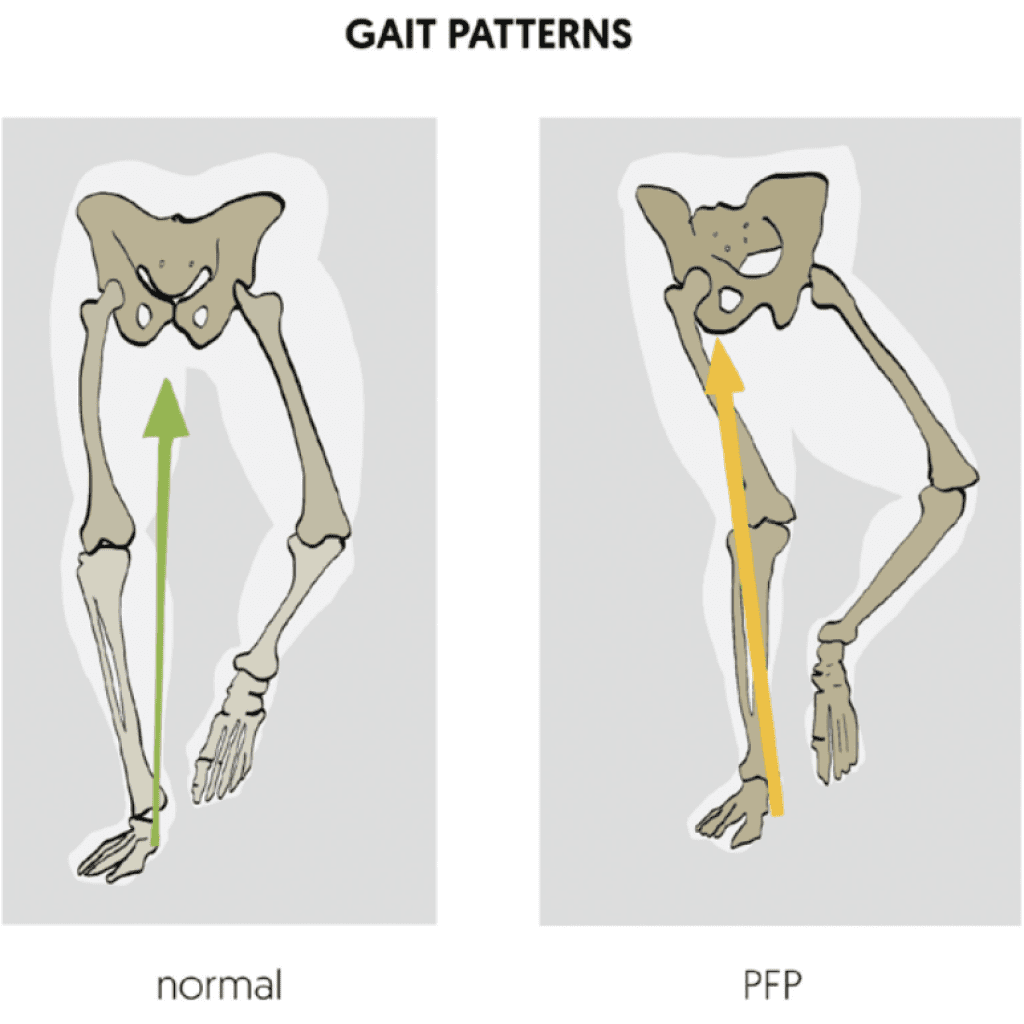
You’re overusing the front of your thigh. Stand up straighter, stretch those quads muscles, and cue up those glutes and hamstrings with some squats and lunges before you run.
Common Running Injury #2: IT Band Pain (ITBS)
If the outside of your knee or outside thigh hurts, you’re probably landing too hard on that foot. Try running to music set to your cadence (165bpm running playlists work for many casual runners) to even that out. Put a ball between your knees and squeeze it for 30 seconds before you run to better use your inner thigh muscles and get your feet landing more under your hips.
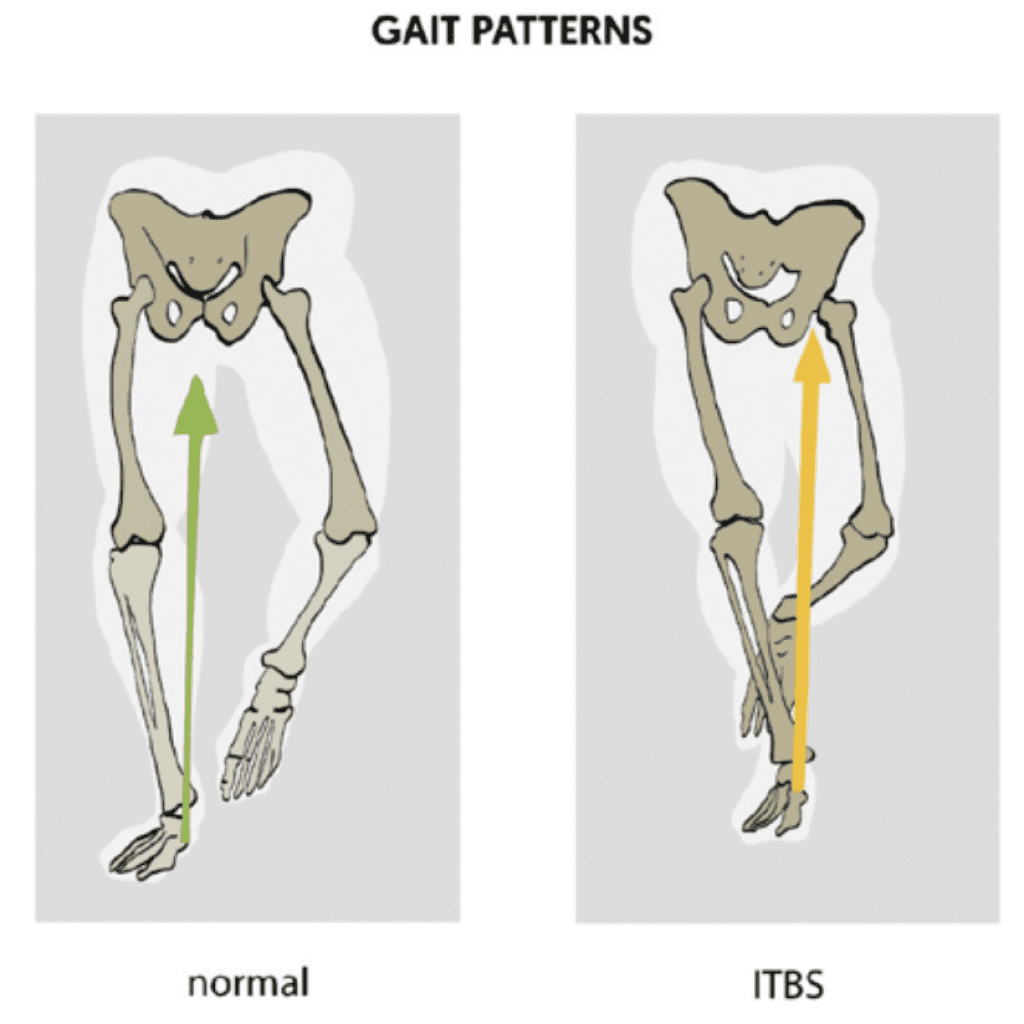
Common Running Injury #3: Achilles Tendinopathy
If your Achilles tendon hurts, you’re not using your hamstrings and/or glutes. Try lunges, step ups, and squats to train those muscles to help out your poor exhausted calves.
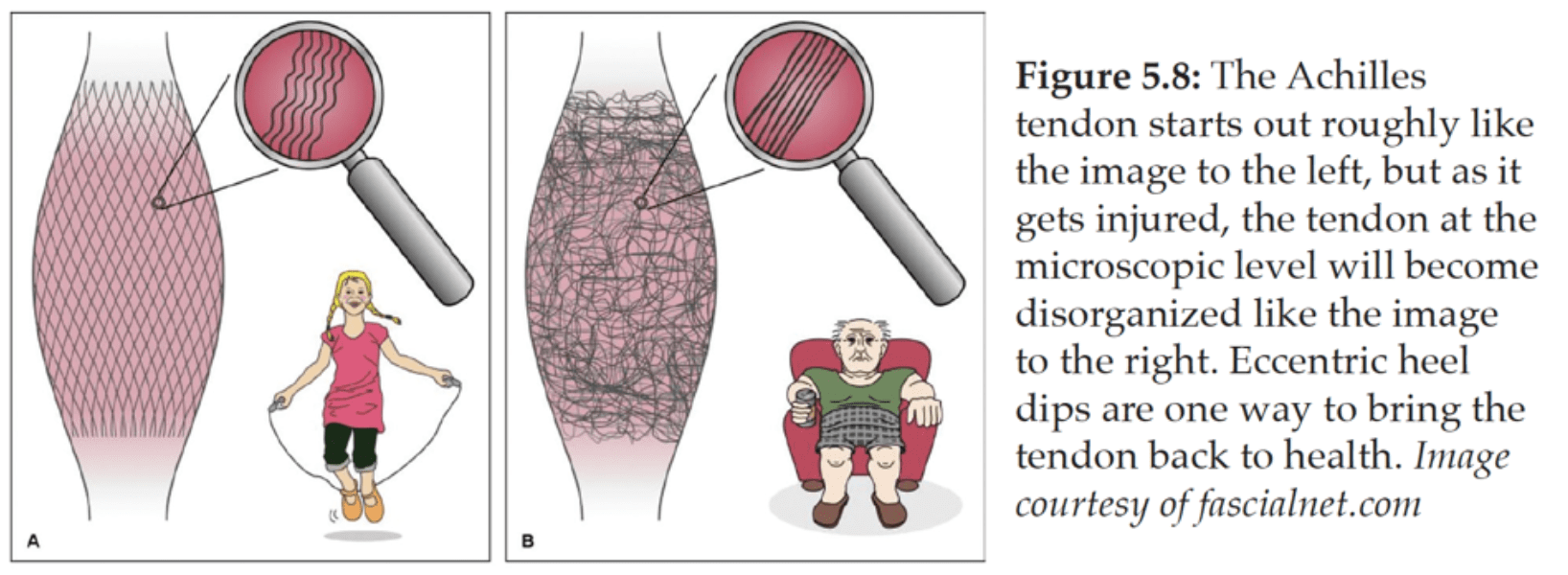
Do eccentric heel dips to heal your tendon pain. Here’s how: stand on a curb or stair on the ball of your foot and do a slow controlled lowering of your heel as far as you comfortably can. Do it with a straight leg or bent leg, 10 reps on both sides, every other day. Studies show you’ll be feeling a whole lot better in six weeks.

Common Running Injury #4: Shin Splints
Your shins hurt when you run or after. This can be on the outside or inside of your shin bone. Make sure you are pushing off your big toe to take stress off those muscles.
Do an upward facing dog and feel that full stretch along the inner thighs to the front of your upper body and carry that upward stretch and activation into your run. This prevents the collapse that causes inner shin splints (MTSS).
Common Running Injury #5: Plantar Fasciitis
The bottom of your foot hurts. Sit on your toes, roll your feet out with a foam roller or other tool. Do calf raises with a rolled up towel under your toes to have the stretched and flexed up away from the ground. This trains your feet to function better.

Part 2: How to Keep Your Day from Creating Pain
We usually start out bright eyed and bushy tailed, often thanks to the caffeine assist. If we’re lucky, we start the day with little to no pain. But as the day goes on, stiffness and pain can often show up. By the end of the day we might be feeling that discomfort in our backs, our necks, our hands, or our hips.
Why?
As members of our society, we tend to sit a lot and take on certain positions associated with regular cell phone and laptop use. Our hips are bent, our hands often face palm down and are placed in front of us. We might crane our necks to look at any of various screens throughout the day for extended periods of time.
Are we screwed?
Fortunately, no. There are a ton of exercises and stretches we can do to counteract the daily toll of our lives. And it’s important to note: it’s ok to be in our daily positions, we just need to know how to counteract them as well.
Here are some ways to do that. Remember, breathe deep and if any of these exercises hurt, back off or don’t do it!
Hand, wrist, and forearm tightness or pain: Try bending your wrist back and pulling each finger back one at a time. Take your time here and remember your goal is to stretch and release those tight hands and forearms, not to create pain while doing it.
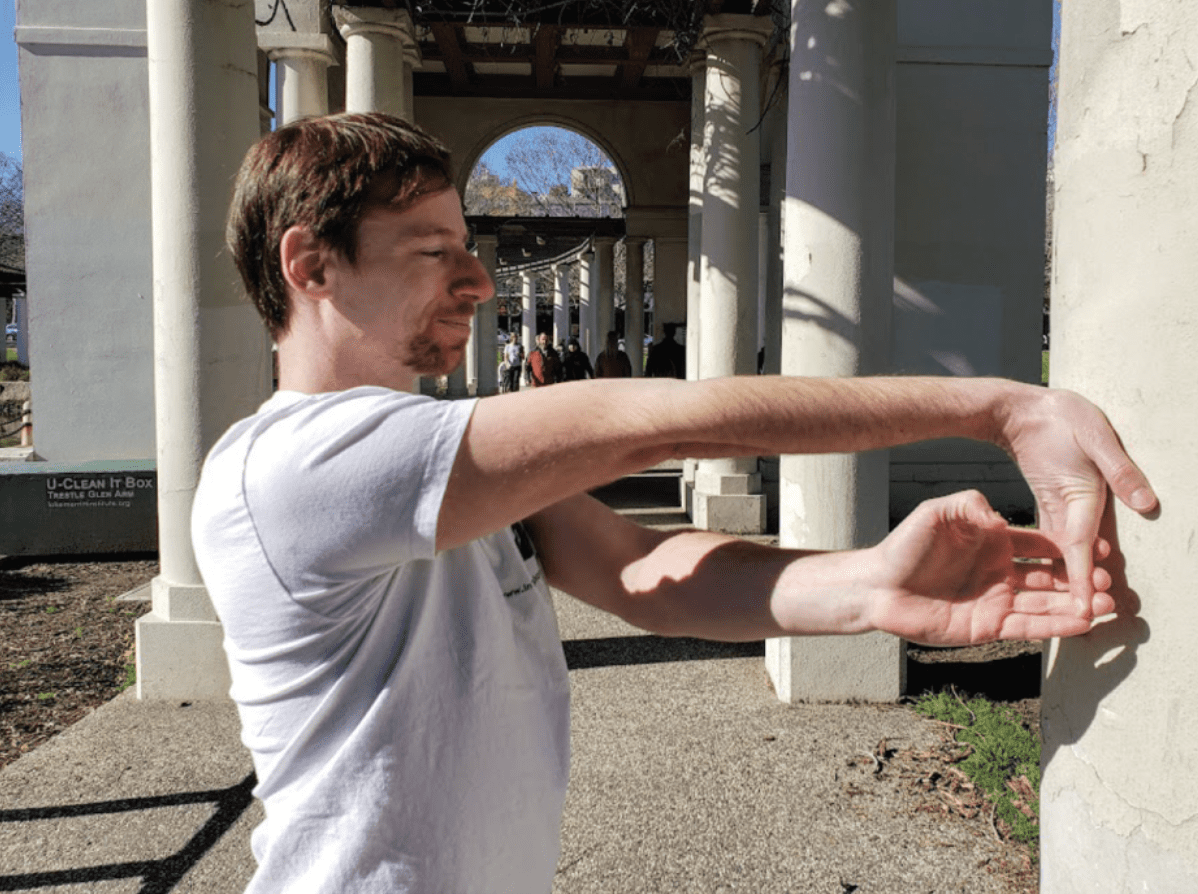
Chest and upper back tightness or pain: Open up that chest! Reach your arms straight and back as far as they can go. Breath deep. Use a wall or doorframe to help your arm relax stretches back out behind you and to your side.
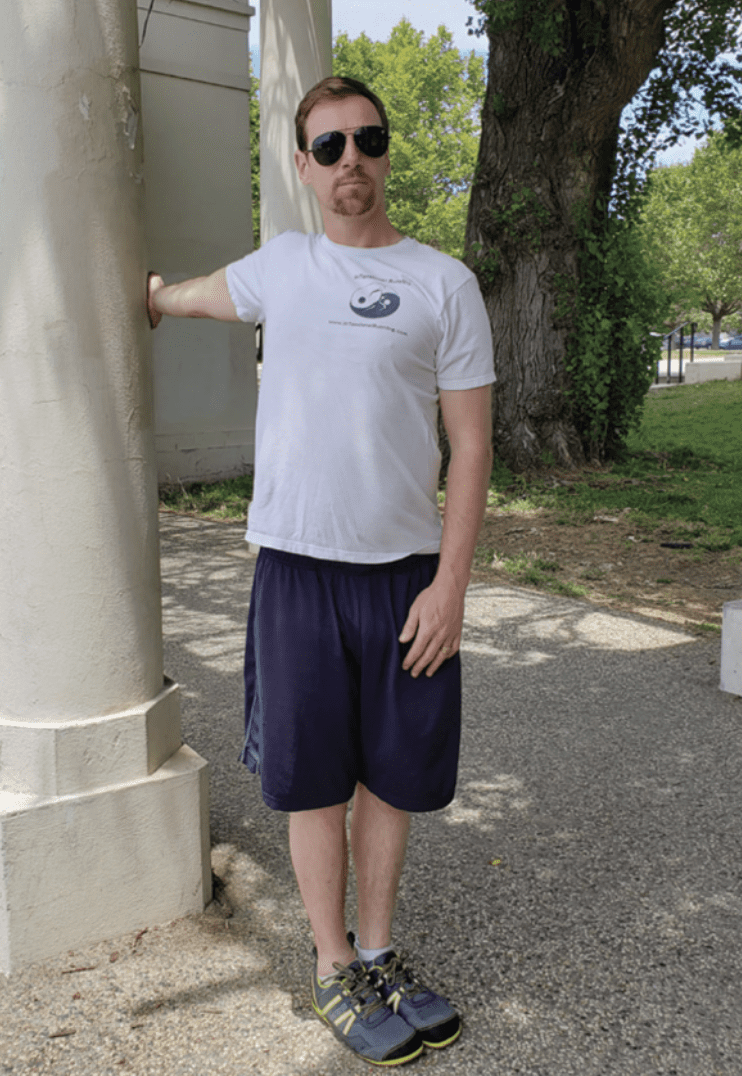
Low back tightness or pain: Get into your hips. Try a deep squat, perhaps holding onto something to relax into it better. Stand and fold your upper body towards your toes. Get your feet wide and parallel and fold your upper body towards the ground and each leg.
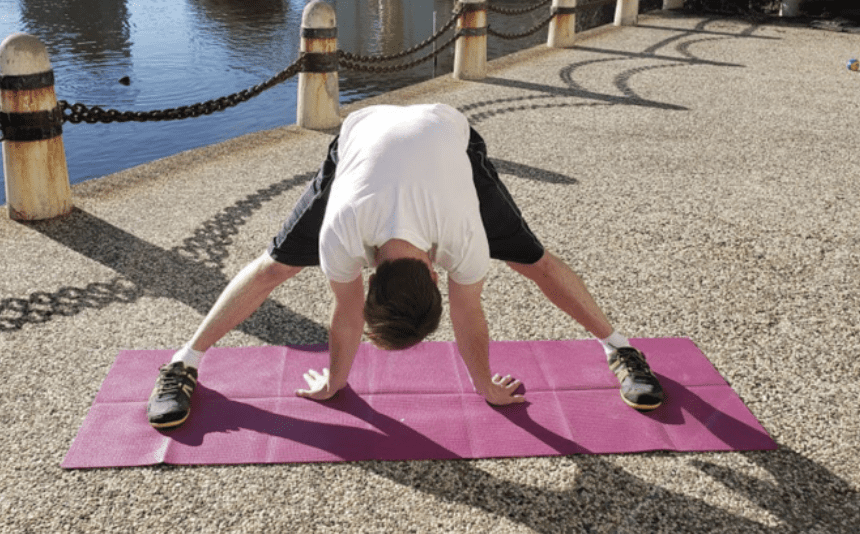
As long as we have the tools to counteract our daily activities, we can live a pain free life free to enjoy what we can.
Part 3 – Don’t forget to Breathe Out Pain in Your Daily Life!
Moving well in our daily lives can be surprisingly tricky. I’ve had many clients laughing as we cover how to walk. It’s often a humbling and informative experience for them. And I get it – knowing how to walk well is the result of over a decade of obsession on my part.
Breathing and quick pain release exercises are two pretty accessible ways I’ve found to help people develop safe movement. It makes sense if you think about it…we tend to forget to breathe and often find ourselves in some degree of strain at some point in the day.
Breathing
Breathing is something we generally do in short unconscious gasps. These little ‘chest breaths’ lift our chest a little and rarely take advantage of more than 30% of our lung capacity. They keep us stressed, small, and often with an undertone of anxiety and discomfort that we may not even be fully aware of.
Try placing your hand on your belly and take deep breaths. Keep breathing until you see your belly expand with each inhale. There! Now you’re using the often forgotten 70% of your lung capacity.
Try placing your other hand on your chest. Now start your inhale into the belly and finish it with your chest expanding. Try to feel the breath expanding the sides and back of your rib cage. Breath all the way up to your collar bone. Your lungs go that high!
Now you have all your lunge capacity back. Plus it’s a mindfulness exercise with all the well documented benefits of that category of training, which includes decreased stress and anxiety as well. Those deep breaths also expand and release your tense muscles from your hips to the bottom of your neck. In motion, deep breaths can turn a walk into a revelation of movement and calm.
Last tip… Quick Pain Management Release
Breathing may have gotten that achy discomfort or pain out of your body already. If not, there are tons of quick pain management exercises you can do.
Here’s one for the wrists up to the elbows: bend your wrist back with fingers pointed up with a straight arm and turn your hand so the fingers face to your left and then to your right. If you can painlessly turn them even farther, go for it. Turn them back in smaller motions around when you feel some particularly productive release happening in your lower arm.

Now bend your wrist the other direction with fingers pointed down and turn your hand (now the palm faces you) to send the fingers to the left and right. Same thing here- try smaller movements when you find a juicy spot to relax and release.
Don’t forget to breathe deeply and remember, there’s always something you can do for your muscle discomfort. And if you’d like more support on that, I’m here to help!
Timur Crone
USATF Certified Running Coach, licensed Massage Therapist, Reposturing Bodyworker, FRC mobility specialist, and Chi Gong/Tai Chi instructor.
Website: www.intensionalrunning.com
IG: @intensionalmovement
Email: timurcrone@intensionalmovement.com
Amazon: InTensional Running: Your Guide to Enjoyable and Sustainable Running
Timur’s partner, Jen Joseph is an AASECT certified sex therapist and relationship therapist whose turned her health around with keto and exercise. Timur credits her with being the one who found The Good Chocolate. Their favorite flavors are Ginger and Himalayan Salt.
Jen Joseph: https://www.jenjosephtherapies.com/
AUTHOR

SHARE FOR GOOD KARMA
MORE POSTS
Good things happen to those who read ; )
SPECIAL 15% OFF for BETTER BE GOOD blog launch!
Use code: betterbegood15 at checkout
